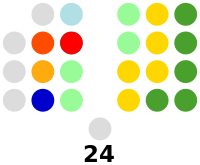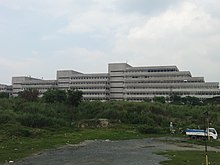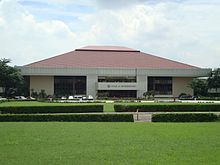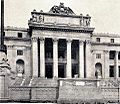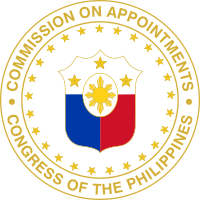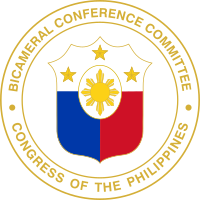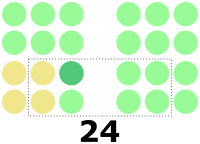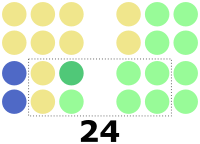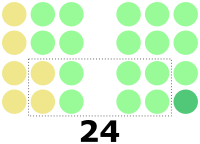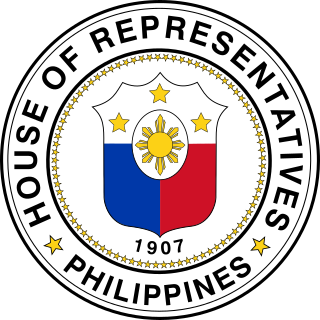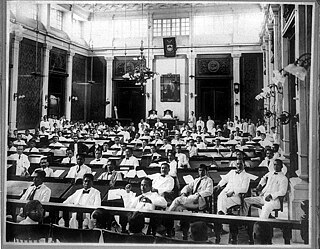| Party | Votes | % | +/– | Seats | +/– |
|---|
| ACT-CIS Partylist | 2,111,091 | 5.74 | −3.77 | 3 | 0 |
| Ang Buklod ng mga Motorista ng Pilipinas | 1,001,243 | 2.72 | New | 2 | New |
| Tingog Sinirangan | 886,959 | 2.41 | +1.01 | 2 | +1 |
| 4Ps Party-list | 848,237 | 2.30 | New | 2 | New |
| Ako Bicol Political Party | 816,445 | 2.22 | −1.54 | 2 | 0 |
| SAGIP Partylist | 780,456 | 2.12 | +1.20 | 2 | +1 |
| Ang Probinsyano Party-list | 714,634 | 1.94 | −0.82 | 1 | −1 |
| Uswag Ilonggo Party | 689,607 | 1.87 | New | 1 | New |
| Tutok To Win Party-List | 685,578 | 1.86 | New | 1 | New |
| Citizens' Battle Against Corruption | 637,044 | 1.73 | −1.60 | 1 | −1 |
| Senior Citizens Partylist | 614,671 | 1.67 | −0.18 | 1 | 0 |
| Duterte Youth | 602,196 | 1.64 | +0.37 | 1 | 0 |
| Agimat ng Masa | 586,909 | 1.59 | New | 1 | New |
| Kabataan Partylist | 536,690 | 1.46 | +0.76 | 1 | 0 |
| Agrikultura Ngayon Gawing Akma at Tama | 530,485 | 1.44 | New | 1 | New |
| Marino Samahan ng mga Seaman | 530,382 | 1.44 | −1.00 | 1 | −1 |
| Ako Bisaya | 512,795 | 1.39 | −0.02 | 1 | 0 |
| Probinsyano Ako | 471,904 | 1.28 | −0.98 | 1 | −1 |
| LPG Marketers Association | 453,895 | 1.23 | +0.48 | 1 | 0 |
| Abante Pangasinan-Ilokano Party | 451,372 | 1.23 | New | 1 | New |
| Gabriela Women's Party | 423,891 | 1.15 | −0.46 | 1 | 0 |
| Construction Workers Solidarity | 412,333 | 1.12 | +0.12 | 1 | 0 |
| Agri-Agra na Reporma para sa Magsasaka ng Pilipinas | 393,987 | 1.07 | +0.59 | 1 | +1 |
| P3PWD Party List | 391,174 | 1.06 | New | 1 | New |
| Ako Ilocano Ako | 387,086 | 1.05 | New | 1 | New |
| Kusug Tausug | 385,770 | 1.05 | +0.23 | 1 | 0 |
| An Waray | 385,460 | 1.05 | −0.54 | 1 | 0 |
| Kalinga-Advocacy for Social Empowerment and Nation-Building Through Easing Poverty | 374,308 | 1.02 | −0.20 | 1 | 0 |
| Agricultural Sector Alliance of the Philippines | 367,533 | 1.00 | +0.25 | 1 | 0 |
| Coop-NATCCO | 346,341 | 0.94 | −0.56 | 1 | 0 |
| Malasakit at Bayanihan Foundation | 345,199 | 0.94 | New | 1 | New |
| Barangay Health Wellness | 335,598 | 0.91 | −0.06 | 1 | 0 |
| Galing sa Puso Party | 333,817 | 0.91 | +0.02 | 1 | 0 |
| Bagong Henerasyon | 330,937 | 0.90 | −0.14 | 1 | 0 |
| ACT Teachers Partylist | 330,529 | 0.90 | −0.52 | 1 | 0 |
| Talino at Galing ng Pinoy | 327,912 | 0.89 | +0.11 | 1 | 0 |
| Bicol Saro | 325,371 | 0.88 | New | 1 | New |
| United Senior Citizens Koalition ng Pilipinas [lower-alpha 1] | 320,627 | 0.87 | New | 1 | New |
| Dumper Philippines Taxi Drivers Association | 314,618 | 0.85 | +0.05 | 1 | 0 |
| Pinatatag na Ugnayan para sa mga Oportunidad sa Pabahay ng Masa | 299,990 | 0.82 | New | 1 | New |
| Abang Lingkod | 296,800 | 0.81 | −0.18 | 1 | 0 |
| PBA Partylist | 294,619 | 0.80 | −0.37 | 1 | 0 |
| One Filipinos Worldwide Coalition Partylist | 293,301 | 0.80 | New | 1 | New |
| Abono Partylist | 288,752 | 0.78 | −0.58 | 1 | 0 |
| Anakalusugan | 281,512 | 0.76 | −0.09 | 1 | 0 |
| Kabalikat ng Mamamayan | 280,066 | 0.76 | +0.05 | 1 | 0 |
| Magkakasama sa Sakahan Kaunlaran | 276,889 | 0.75 | −1.03 | 1 | 0 |
| One Patriotic Coalition of Marginalized Nationals | 273,195 | 0.74 | −1.82 | 1 | −1 |
| APEC Partylist | 271,380 | 0.74 | −0.98 | 1 | 0 |
| Pusong Pinoy | 262,044 | 0.71 | New | 1 | New |
| Trade Union Congress Party | 260,779 | 0.71 | −0.21 | 1 | 0 |
| Public Safety Alliance for Transformation and Rule of Law Inc. | 252,571 | 0.69 | −0.09 | 1 | 0 |
| Manila Teacher's Savings and Loan Association | 249,525 | 0.68 | −0.21 | 1 | 0 |
| AAMBIS-Owa Party List | 246,053 | 0.67 | −0.17 | 1 | 0 |
| Philippine Rural Electric Cooperatives Association | 243,487 | 0.66 | −0.76 | 1 | 0 |
| Alliance of Organizations, Networks and Associations of the Philippines | 238,704 | 0.65 | −0.50 | 1 | 0 |
| Akbayan | 236,226 | 0.64 | +0.02 | 0 | 0 |
| Democratic Independent Workers Association | 234,996 | 0.64 | −0.06 | 0 | −1 |
| Asenso Pinoy | 232,229 | 0.63 | New | 0 | 0 |
| Mindanao Indigenous Conference for Peace and Development [lower-alpha 2] | 230,315 | 0.63 | New | 0 | 0 |
| Ang Pamilya Muna | 225,041 | 0.61 | New | 0 | 0 |
| A Teacher Partylist | 221,327 | 0.60 | −0.38 | 0 | −1 |
| Bayan Muna | 219,848 | 0.60 | −3.41 | 0 | −3 |
| 1st Consumers Alliance for Rural Energy | 218,215 | 0.59 | +0.13 | 0 | 0 |
| You Against Corruption and Poverty | 214,694 | 0.58 | −0.02 | 0 | 0 |
| Kasama Regional Political Party | 213,539 | 0.58 | New | 0 | 0 |
| Ako Bisdak - Bisayang Dako | 204,111 | 0.55 | +0.37 | 0 | 0 |
| Abante Sambayanan [lower-alpha 2] | 201,961 | 0.55 | New | 0 | 0 |
| Alliance of Public Transport Organization | 183,869 | 0.50 | New | 0 | 0 |
| Nagkakaisang Pilipino para sa Pag-Angat ng Maralitang Manileño | 174,452 | 0.47 | New | 0 | 0 |
| Towards Development and Action | 174,396 | 0.47 | New | 0 | 0 |
| Advocates and Keepers Organization of OFWs | 169,177 | 0.46 | New | 0 | 0 |
| Philippine National Police Retirees Association | 160,418 | 0.44 | +0.15 | 0 | 0 |
| Samahan ng Manggagawa sa Industriya ng Live Events | 158,245 | 0.43 | New | 0 | 0 |
| Pamilyang Magsasaka | 158,034 | 0.43 | New | 0 | 0 |
| Philippine Educators Alliance for Community Empowerment | 157,617 | 0.43 | 0.00 | 0 | 0 |
| Bayaning Tsuper | 157,278 | 0.43 | New | 0 | 0 |
| Acts Overseas Filipino Workers Coalition of Organizations | 155,072 | 0.42 | −0.05 | 0 | 0 |
| Pinagbuklod na Filipino para sa Bayan | 151,502 | 0.41 | +0.34 | 0 | 0 |
| Tulungan Tayo | 147,050 | 0.40 | New | 0 | 0 |
| Filipino Rights Protection Advocates of Manila Movement | 144,969 | 0.39 | New | 0 | 0 |
| Bahay para sa Pamilyang Pilipino | 142,676 | 0.39 | −0.62 | 0 | −1 |
| Tagapagtaguyod ng mga Reporma at Adhikaing Babalikat at Hahango sa mga Oportunidad para sa mga Pilipino | 138,973 | 0.38 | New | 0 | 0 |
| Anak Mindanao | 134,647 | 0.37 | −0.39 | 0 | −1 |
| Ako Padayon Pilipino Party List | 132,222 | 0.36 | −0.48 | 0 | −1 |
| Cancer Alleviation Network on Care, Education and Rehabilitation | 128,284 | 0.35 | New | 0 | 0 |
| Kalipunan ng Maralita at Malayang Mamamayan | 126,393 | 0.34 | New | 0 | 0 |
| Magdalo Party-List | 119,189 | 0.32 | −0.59 | 0 | −1 |
| PDP Cares Foundation | 117,139 | 0.32 | New | 0 | 0 |
| Rural Electric Consumers and Beneficiaries of Development and Advancement | 117,126 | 0.32 | −0.82 | 0 | −1 |
| Act as One Philippines | 116,173 | 0.32 | New | 0 | 0 |
| Kooperatiba-Kapisanan ng Magsasaka ng Pilipinas | 114,587 | 0.31 | +0.13 | 0 | 0 |
| Walang Iwanan sa Free Internet Inc. | 113,971 | 0.31 | New | 0 | 0 |
| Bisaya Gyud Party-List | 113,388 | 0.31 | New | 0 | 0 |
| Hugpong Federal Movement of the Philippines | 112,654 | 0.31 | New | 0 | 0 |
| Moro Ako - Ok Party-List | 110,171 | 0.30 | New | 0 | 0 |
| Angkla: ang Partido ng mga Pilipinong Marino | 109,343 | 0.30 | −0.35 | 0 | 0 |
| Ang National Coalition of Indigenous People Action Na! | 108,807 | 0.30 | New | 0 | 0 |
| Passengers and Riders Organization | 108,647 | 0.30 | New | 0 | 0 |
| Ang Kabuhayan Partylist | 108,535 | 0.29 | +0.02 | 0 | 0 |
| Ang Tinig ng Seniors Citizens sa Filipinas, Inc. [lower-alpha 2] | 104,957 | 0.29 | New | 0 | 0 |
| Lungsod Aasenso | 103,149 | 0.28 | New | 0 | 0 |
| Buhay Party-List | 103,077 | 0.28 | −1.02 | 0 | −1 |
| Una ang Edukasyon | 102,687 | 0.28 | −0.15 | 0 | 0 |
| Igorot Warriors International, Inc. [lower-alpha 2] | 95,217 | 0.26 | New | 0 | 0 |
| OFW Family Club | 93,059 | 0.25 | −0.47 | 0 | −1 |
| Health, Education, Livelihood Program of the Philippines | 93,007 | 0.25 | New | 0 | 0 |
| Wow Pilipinas Movement | 90,698 | 0.25 | −0.37 | 0 | 0 |
| Kapamilya ng Manggagawang Pilipino | 89,695 | 0.24 | New | 0 | 0 |
| Ating Agapay Sentrong Samahan ng mga Obrero | 88,611 | 0.24 | −0.03 | 0 | 0 |
| Friends of the Poor and Jobless Party-List [lower-alpha 2] | 88,564 | 0.24 | New | 0 | 0 |
| Butil Farmers Party | 87,305 | 0.24 | −0.35 | 0 | 0 |
| Avid Builders of Active Nation's Citizenry Towards Empowered Philippines | 87,211 | 0.24 | −0.11 | 0 | 0 |
| Subanen Party-List | 86,533 | 0.24 | New | 0 | 0 |
| Turismo Isulong Mo | 86,119 | 0.23 | New | 0 | 0 |
| Abe Kapampangan | 85,226 | 0.23 | −0.07 | 0 | 0 |
| Barkadahan para sa Bansa | 83,860 | 0.23 | New | 0 | 0 |
| Anakpawis | 81,436 | 0.22 | −0.31 | 0 | 0 |
| Ugyon Mangunguma, Mangingisda kag Mamumugon nga Ilonggo [lower-alpha 2] | 73,454 | 0.20 | New | 0 | 0 |
| Ang Kabuhayang Kayang Kaya | 72,547 | 0.20 | New | 0 | 0 |
| National Association of Electricity Consumers for Reforms | 71,822 | 0.20 | −0.09 | 0 | 0 |
| Rebolusyonaryong Alyansang Makabansa | 69,740 | 0.19 | −0.66 | 0 | −1 |
| Ayuda sa May Kapansanan [lower-alpha 2] | 66,457 | 0.18 | New | 0 | 0 |
| Ang Bumbero ng Pilipinas | 65,929 | 0.18 | New | 0 | 0 |
| Kilusang Maypagasa | 65,133 | 0.18 | −0.10 | 0 | 0 |
| Mothers for Change | 64,785 | 0.18 | New | 0 | 0 |
| One Coop | 64,627 | 0.18 | New | 0 | 0 |
| Ang Komadrona | 64,087 | 0.17 | New | 0 | 0 |
| Samahan ng Totoong Larong may Puso Foundation | 60,384 | 0.16 | New | 0 | 0 |
| Malabung Workers Party | 59,499 | 0.16 | New | 0 | 0 |
| Ang Laban ng Indiginong Filipino | 58,658 | 0.16 | −0.09 | 0 | 0 |
| Kabalikat ng Bayan sa Kaunlaran | 57,692 | 0.16 | New | 0 | 0 |
| Bunyog Pagkakaisa | 57,030 | 0.15 | New | 0 | 0 |
| Computer Literacy, Innovation Connectivity and Knowledge | 55,842 | 0.15 | New | 0 | 0 |
| Kabalikat Patungo sa Umuunlad na Sistematiko at Organisadong Pangkabuhayan Movement | 53,635 | 0.15 | New | 0 | 0 |
| Home Owners, and Marginalized Empowerment Through Opportunities with Neighborhood Economic Reliability | 53,560 | 0.15 | New | 0 | 0 |
| Kilos Mamamayan Ngayon Na | 52,205 | 0.14 | New | 0 | 0 |
| United Frontliners of the Philippines | 50,849 | 0.14 | New | 0 | 0 |
| Alsa Bisaya | 47,415 | 0.13 | New | 0 | 0 |
| Bangon Philippine Outsourcing | 47,382 | 0.13 | New | 0 | 0 |
| Lingkud Bayanihan Party [lower-alpha 2] | 43,896 | 0.12 | New | 0 | 0 |
| Maharlikang Pilipino Party | 43,260 | 0.12 | New | 0 | 0 |
| Advocates for Retail & Fashion, Textile & Tradition, Events, Entertainment & Creative Sector | 42,086 | 0.11 | New | 0 | 0 |
| Ipatupad for Workers Inc. | 41,797 | 0.11 | New | 0 | 0 |
| Kabalikat ng Hustisiya ng Nagkakaisang Manileno | 39,344 | 0.11 | +0.01 | 0 | 0 |
| Babae Ako para sa Bayan | 39,254 | 0.11 | New | 0 | 0 |
| Damayan para sa Reporma Tungo sa Inklusibo at Laganap na mga Oportunidad Ngayon | 36,394 | 0.10 | New | 0 | 0 |
| Partido Cocoman | 35,583 | 0.10 | New | 0 | 0 |
| Aktibong Kaagapay ng mga Manggagawa | 34,338 | 0.09 | New | 0 | 0 |
| Ako Breeder Party-List [lower-alpha 2] | 32,630 | 0.09 | New | 0 | 0 |
| Ako Musikero Association | 28,297 | 0.08 | New | 0 | 0 |
| Philippine Society for Industrial Security | 27,851 | 0.08 | New | 0 | 0 |
| Ang Koalisyon ng Indigenous People | 27,583 | 0.07 | New | 0 | 0 |
| Aksyon Magsasaka-Partido Tinig ng Masa | 27,364 | 0.07 | −0.62 | 0 | 0 |
| Mindoro Sandugo para sa Kaunlaran | 26,800 | 0.07 | New | 0 | 0 |
| Samahang Ilaw at Bisig | 25,871 | 0.07 | New | 0 | 0 |
| One Unified Transport Alliance of the Philippines Bicol Region | 23,021 | 0.06 | −0.02 | 0 | 0 |
| Alagaan ang Sambayanang Pilipino | 22,543 | 0.06 | New | 0 | 0 |
| Parents Teachers Alliance | 22,319 | 0.06 | −0.04 | 0 | 0 |
| Ang Programang Aasenso Taumbayan - Dream, Act, Participate and Advocate for Sustainable Transformation [lower-alpha 2] | 20,949 | 0.06 | New | 0 | 0 |
| Arts Business and Science Professionals | 20,149 | 0.05 | −0.06 | 0 | 0 |
| Alliance for Resilience, Sustainability and Empowerment [lower-alpha 2] | 20,131 | 0.05 | New | 0 | 0 |
| Movement of Active Apostolic Guardians Association of the Philippines | 19,645 | 0.05 | New | 0 | 0 |
| Solid Movement Towards Comprehensive Change | 18,954 | 0.05 | New | 0 | 0 |
| Noble Advancement of Marvelous People of the Philippines Inc. | 18,172 | 0.05 | +0.01 | 0 | 0 |
| Alternatiba ng Masa | 18,048 | 0.05 | New | 0 | 0 |
| Partido Lakas ng Masa | 17,783 | 0.05 | −0.05 | 0 | 0 |
| Pilipino Society and Development Advocates Commuter-Consumer | 17,406 | 0.05 | New | 0 | 0 |
| United Filipino Consumers and Commuters | 16,733 | 0.05 | New | 0 | 0 |
| Aksyon Tungo sa Asenso at Pagsulong ng Pilipino | 16,116 | 0.04 | New | 0 | 0 |
| People's Volunteer Against Illegal Drugs | 14,330 | 0.04 | New | 0 | 0 |
| National Firemen's Confederation of the Philippines | 11,692 | 0.03 | New | 0 | 0 |
| Laban ng Isang Bayan Para sa Reporma at Oportunidad [lower-alpha 2] | 11,067 | 0.03 | New | 0 | 0 |
| 1 Tahanan | 10,383 | 0.03 | New | 0 | 0 |
| Pilipinas para sa Pinoy | 8,774 | 0.02 | −0.03 | 0 | 0 |
| Aangat Kusinerong Pinoy | 8,261 | 0.02 | New | 0 | 0 |
| Kusog Bikolandia | 7,840 | 0.02 | New | 0 | 0 |
| Total | 36,802,064 | 100.00 | – | 63 | +2 |
|
| Valid votes | 36,802,064 | 65.73 | +6.77 | |
|---|
| Invalid/blank votes | 19,190,179 | 34.27 | −6.77 | |
|---|
| Total votes | 55,992,243 | 100.00 | – | |
|---|
| Registered voters/turnout | 67,452,866 | 83.01 | +8.70 | |
|---|
| Source: COMELEC |


